Description
This foolproof recipe for Oven Baked Teriyaki Salmon yields perfectly cooked salmon fillets in a sticky, sweet and savoury glaze served with a tangle of sesame noodles and a handful of peppery watercress.
Ingredients
For the Teriyaki Salmon
- 2 tbsp dark soy sauce
- 2 tbsp mirin
- 1 tbsp maple syrup
- 1/2 thumb size piece fresh ginger
- 2 x responsibly sourced salmon fillets
For the Sesame Noodles
- 1 x nest fine egg noodles (the chewier ones designed for ramen, if possible)
- 1 large spring onion
- 1/2 tsp black sesame seeds
- 1/2 tsp toasted sesame oil
- 1/4 tsp Japanese rice wine vinegar (see note)
- freshly ground sea salt
- 2 generous handfuls fresh watercress
Instructions
- Whisk together the soy sauce, mirin, maple syrup, and the ginger, peeled and finely grated in a small bowl to make the glaze. Add the salmon fillets and turn them over so they’re well coated. Leave to marinate, skin side up, for 20 minutes.
- Meanwhile, pre-heat the oven to 180 degrees (355 farenheit) and cook the noodles as per the packets instructions. You want them to be tender, but still with a little bite. Also, top, tail and finely chop the spring onion.
- Refresh the noodles under cold water until chilled, and drain well. Toss with the chopped spring onion, sesame seeds, toasted sesame oil, rice wine vinegar and salt, to taste. Set aside.
- Lay the salmon fillets skin side down in a baking dish. To allow the soy sauce to reduce down to a sticky glaze, you want about the same amount of empty space in the dish as is being taken up by the salmon fillets – you don’t want to crowd the dish! Bake for 10 minutes.
- Spoon a little glaze over the top of the salmon fillets and cook for a further 2-3 minutes before serving with the noodles, watercress, and as much of the slightly sticky glaze as you desire.
Notes
Japanese rice vinegar tends to be seasoned with a little sugar and sometimes salt (to help season sushi rice), and Chinese is not. If you wish to sub in Chinese rice vinegar you may want to season the noodles with a pinch of sugar or a dash of maple syrup, to taste.

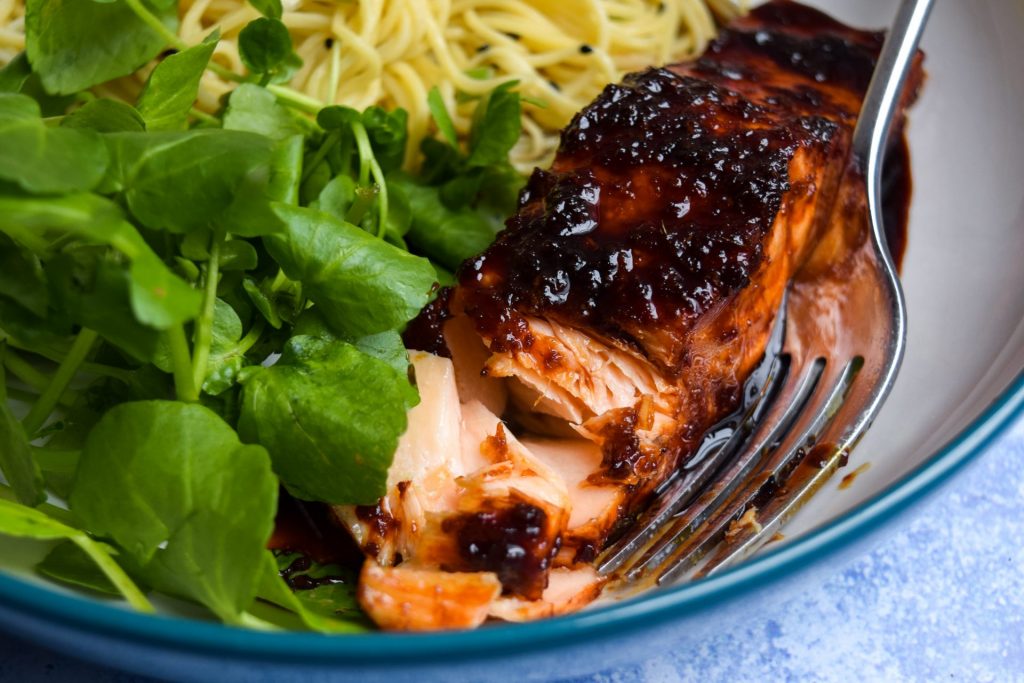
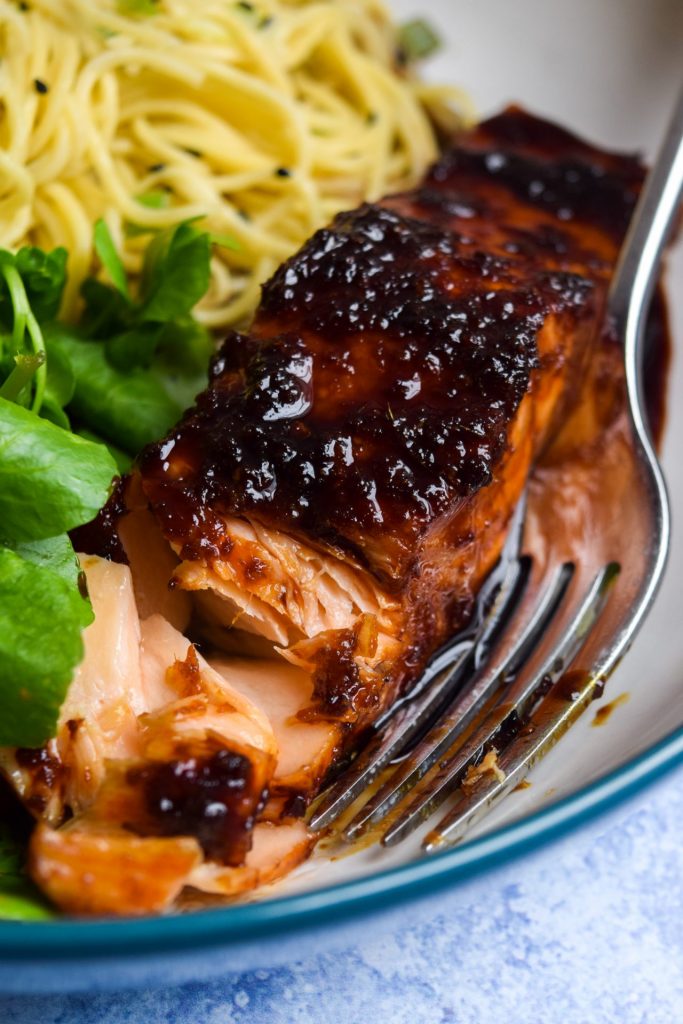
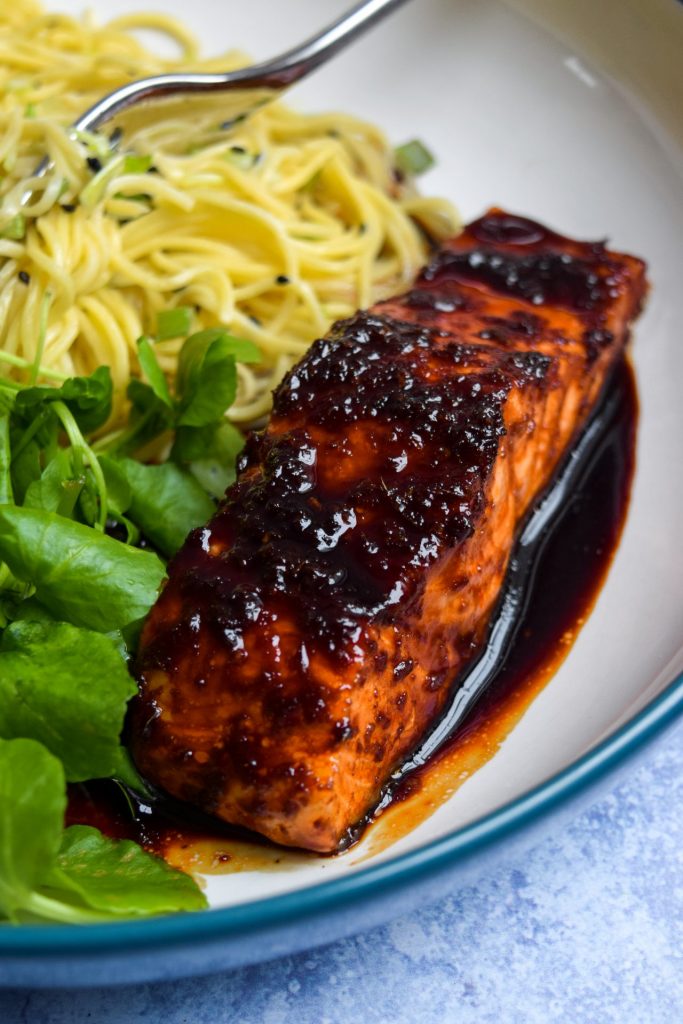

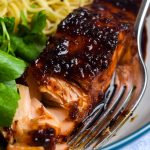


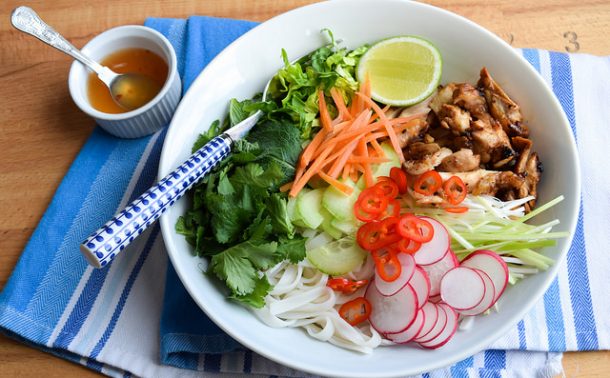
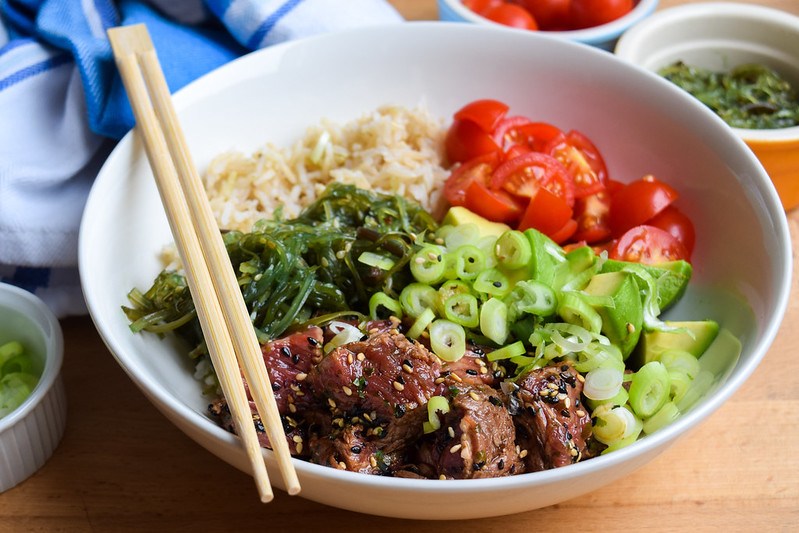

Discussion